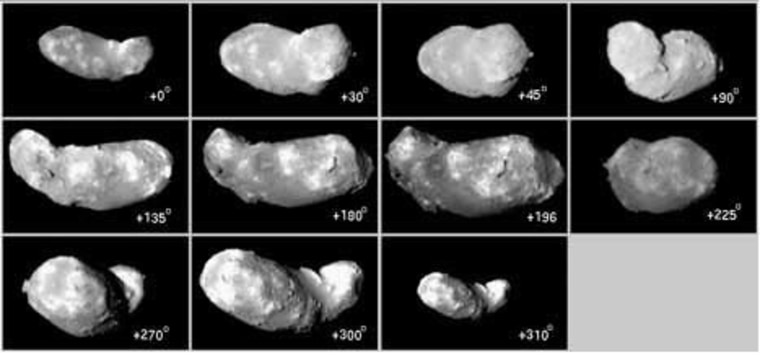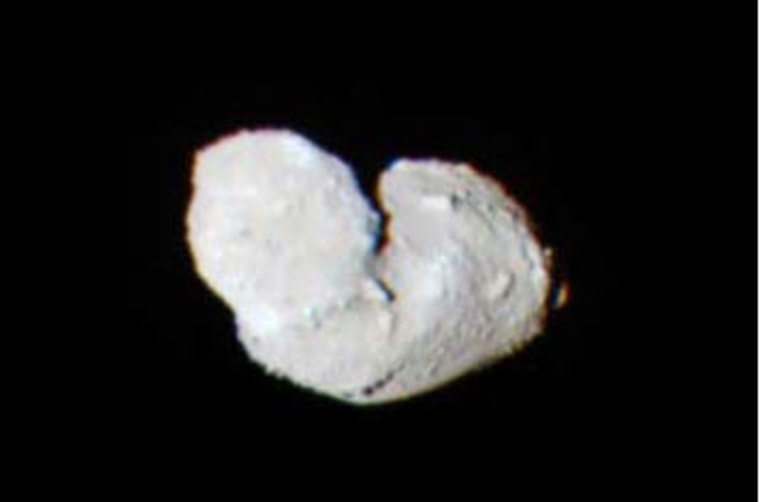Japan's Hayabusa spacecraft is returning imagery and data after successfully arriving at its target, asteroid Itokawa, earlier this week.
"The Hayabusa spacecraft is in good health and all its scientific instruments — consisting of a visible imager, a near infra-red and X-ray spectrometer and a laser altimeter — are functioning normally and have started their calibration observations," reads a mission update from the Japan Aerospace Exploration Agency (JAXA).
Hayabusa is slated to stay at the asteroid until the end of November. The spacecraft is to perform detailed remote sensing and mapping of the asteroid, followed by an attempt to collect a surface sample of asteroid Itokawa for return to Earth in 2007.
Hayabusa is a project of Japan's Institute of Space and Astronautical Science (ISAS), a research arm of JAXA.
During Hayabusa's approach to Itokawa, the probe's visible imager succeeded in producing a color composite photograph of Itokawa by taking three individual pictures using red, green, and blue filters. It also created a series of images showing the rock's rotation.

The images show sunlight illuminating the asteroid from behind the camera, making the terrain features of the object appear more subdued, said ISAS scientists. The rotation period of the irregularly-shaped Itokawa is about 12 hours.
Hayabusa is almost still in relation to Itokawa, ISAS scientists explain. The spacecraft's residual relative speed toward the asteroid means that Hayabusa "stays within the sphere of influence of Itokawa," they noted.
Calculating the mass of Itokawa is one of the most important science observations in this Hayabusa mission.
The Hayabusa project is a collaborative mission with participation by NASA.
